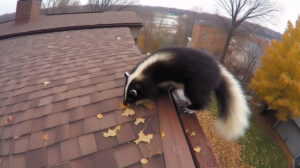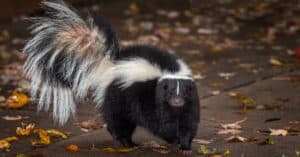The skunk is a member of the weasel family. Their legs are short and stocky, and their feet are large and clawed — which are excellent for digging. Many of us know that skunks are notorious for their stinky defense mechanism. As a matter of fact, a skunk’s spray can reach a distance of up to 10 feet, and its odor can be detected as far as 1.5 miles away. That’s a strong odor! There are four different skunk species in North America, including the hooded skunk, the hog-nosed skunk, the spotted skunk, and the striped skunk. Let’s learn all about skunk mating season and how these stinky critters breed!
When Is Skunk Mating Season?
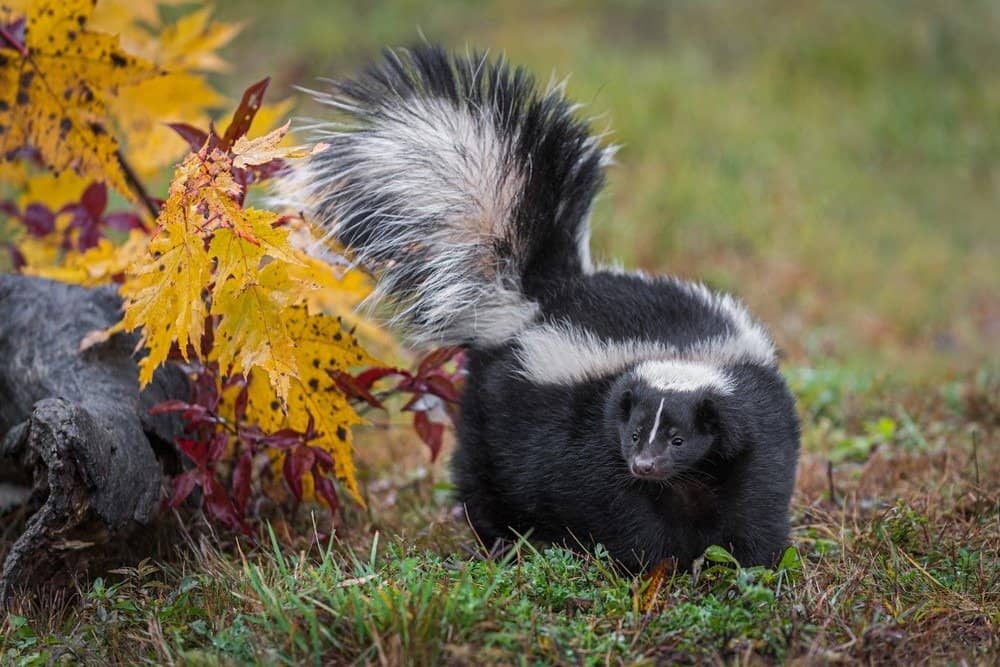
Skunks are known to mate between the months of February through March.
©Geoffrey Kuchera/Shutterstock.com
Each year, skunk mating season occurs between February and March. Skunks stay in their dens during the winter, even though they don’t hibernate like other animals. A skunk may take over the burrow of another animal in order to create his own den. Sometimes they will simply burrow under buildings, porches, or even lumber piles. The fact that skunks can make a home underneath your house is one of the reasons many homeowners consider them pests! Females reject male suitors by releasing their defense mechanism scent, which drives them away. This odor may permeate your own house as a result of this.
Do Skunks Mate For Life?
Among the animals in the animal kingdom, there are some that mate for life. Skunks, however, don’t participate in this ritual. Skunks are known for being polygamous. In other words, they mate with more than one member of the opposite sex. As February approaches, males begin looking for females to breed with. It is not uncommon for them to travel up to 5 miles during mating season to find a female to breed with. In most cases, however, they only travel 1 or 2 miles. During mating season, the males will try to find as many females to mate with as possible. However, the females don’t have to accept a male suitor. A female can reject a male by generating their notorious odor.
How Do Skunks Raise Their Young?
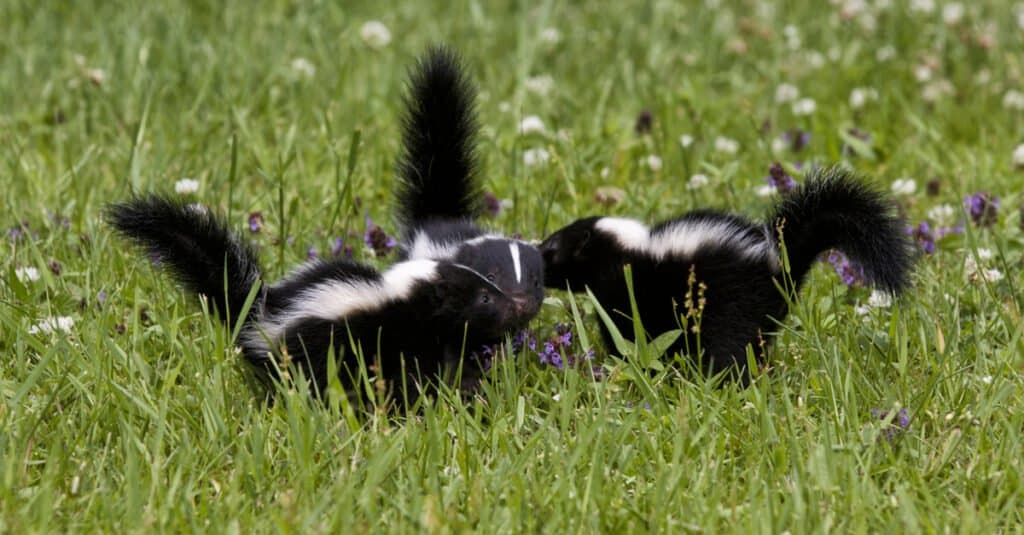
Baby skunks are known as kittens.
©Debbie Steinhausser/Shutterstock.com
A baby skunk is known as a kitten. A skunk’s gestation period ranges from 60 to 75 days. It is not uncommon for skunks to produce litters containing one to 15 kittens each. In the early stages of development, kittens are helpless, blind, and hairless. However, all skunk kittens have a visible striped pattern along their backs. A skunk’s first kittens are usually born between May and June. Male skunks have little involvement in raising and protecting their young. Females are solely responsible for raising litters of kittens.
It is the mother skunk’s job to rear her litter in her den. Even though skunks are usually not aggressive animals, if they perceive their litter is in danger, they will attack. Skunks make warning signs before spraying, including stamping their feet, raising their tail, and hissing. In preparation for spraying, skunks usually twist their back ends toward what or whom they intend to spray.
Keeping Yourself and Your Pet Safe During Skunk Mating Season
As we mentioned above, skunks are not known for being aggressive animals. They can, however, spray their defense mechanisms during mating season and when raising their kits. You’re more likely to smell a skunk before you see one. Fortunately, you can protect yourself by recognizing the signs of a skunk about to spray.
You’ll know that a skunk is about to use its powerful defense when it begins to stomp its front feet, raise its tail, and hiss at you. They may even begin to charge toward you while twisting their body so that their back end faces you. A spotted skunk will even do a handstand, with their rump in the air and eyes still focused on the threat. The most important thing to do in this kind of situation is to move away slowly and quietly. Because dogs can be quite oblivious to these warnings, it is crucial to restrain them to ensure their health and safety.
What Attracts Skunks to Particular Homes During Mating Season?
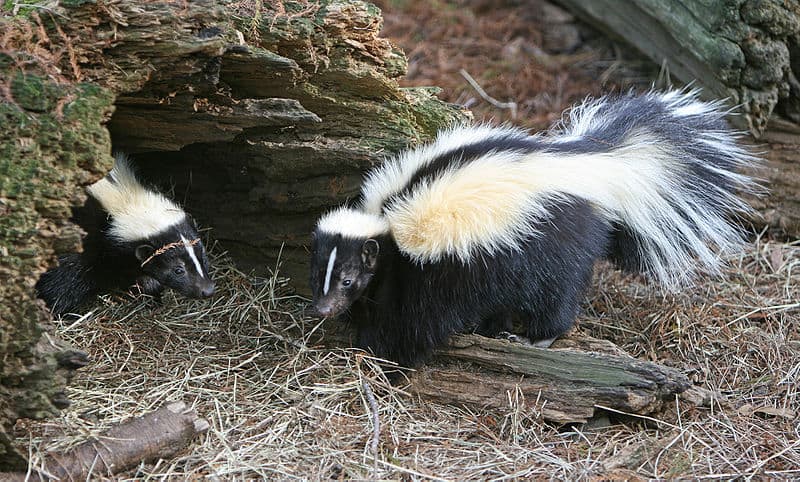
Skunks will find ways to make a den in your home if it is easy enough for them to access food and shelter.
A skunk is an opportunist by nature. This means that they tend to look for the easiest and most convenient locations to set up their dens. One of the things that tend to attract them the most is easily accessible food sources. If you have garbage left unattended or pet food left outside, they will see it as an easy food source and set up a den near your home. In fact, it’s important to pay attention to any easy-access areas such as elevated sheds or even wood or rock piles near your homes. They also like to burrow into porches and other crawl spaces.
If you want to avoid skunk dens near your home, make sure to take preventative measures. Secure your garbage so that skunks cannot access it. Removing pet food from the outdoors overnight is also essential.
The photo featured at the top of this post is © critterbiz/Shutterstock.com
Thank you for reading! Have some feedback for us? Contact the AZ Animals editorial team.



